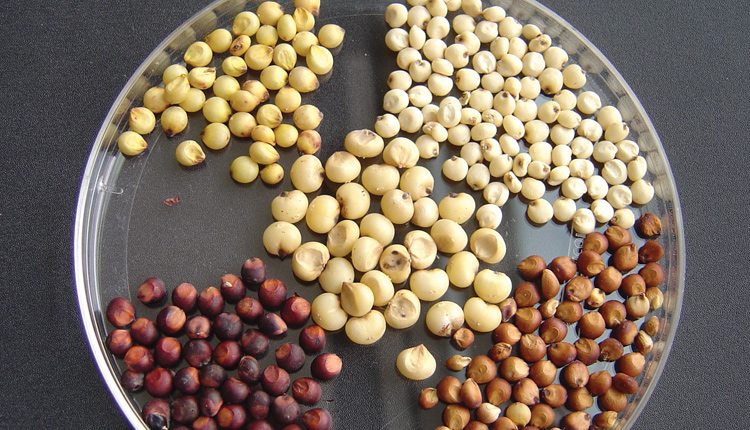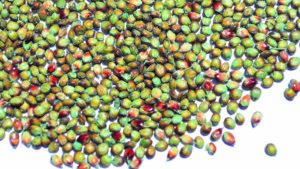Research and consumer interest in health foods brings new market potential to an old world cereal grain.
Perhaps a diamond in the rough and a crop that deserves more glory than given, sorghum offers many benefits and new uses continue to be explored.
According to the Agricultural Marketing Resource Center, the area planted to sorghum worldwide has increased by 66 percent during the past 50 years, and yield has increased by 244 percent. While most of the sorghum grown is used for animal feed, it’s value as a food source is increasing.
Today, sorghum is consumed mostly by those living in low-income countries where the environment tends to be unfavorable to many other grains. Sorghum tolerates drought, soil toxicities and a wide range of temperatures.
But as researchers and food scientists discover new uses for the grain, demand is increasing and experts say there’s tremendous opportunity for growth, stemming from the health-food market.
Studies indicate that sorghum has high levels of phytochemicals, which are known to promote heart health and combat stroke, cancer and neurodegenerative disorders — all the more reason to encourage cultivation of the ancient cereal grain.
“The unique aspect of sorghum not only lies in its health benefits, but it’s also a gluten-free and non-GMO crop, providing an alternative to the 1.5 million people who suffer from Celiac disease,” says Ismail Dweikat, a University of Nebraska, Lincoln, plant breeding and genetics professor.
As such, sorghum flour serves as a wheat-gluten substitute in baked goods, without a big loss of flavor or texture. Its mild flavor and light color also make it an ideal substitute. Food companies are using it in cookies, cakes, crackers, muffins, cereal and pancake mixes.
Contract growers are beginning to react to the demand of gluten-free products and planting specific sorghum varieties for food-grade sorghum, based on demand from brand distributors.
Additionally, sorghum flour can be used for frying, resulting in a crispy texture without becoming sticky. Other sorghum-based products hitting the market include pet food, beer and “healthy” snack foods.
Some of these markets are just in their infancy, encouraging independent research in specific areas, such as sorghum-based dog food for obese pets.
“The unique aspect of sorghum not only lies in its numerous health benefits, but it’s also a gluten-free and non-GMO crop.”
— Ismail Dweikat
Plant Breeding Efforts
Plant breeders and food scientists are teaming up to create some of these new products.
Researchers at the University of Nebraska, Lincoln, are developing a high-quality pop sorghum.
“In addition to enhancing its popping quality, we are working to change the protein composition to increase the digestibility of sorghum,” Dweikat says.
Nutrient enhancement through genetic breeding can create new, nutrient-dense products, such as popped sorghum. Researchers say this is a more nutrient-rich product than popcorn.
Past studies also indicate that sorghum can reduce cholesterol, while providing a diet rich in antioxidants.
Dweikat, whose research focuses on pearl millet and sorghum, says there are exciting things coming down the pipeline for sorghum.
“As the market expands and acceptance becomes more widespread, there will be an incentive for more farmers to grow it,” Dweikat shares.
Bill Rooney, a Texas A&M University plant breeding and genetics professor, says sorghum consumption is being fueled by a health-conscious society.
“The interest in sorghum as a health food choice has really been generated by two things. First of all, its gluten free … and we’re a society that, for one reason or another, has said that we want to consume less gluten.
“The other thing has been the fact that we can find genotypes and accessions of hybrids, and produce hybrids, that have rather high levels of antioxidants. These antioxidant levels are comparable to and above levels you can find in fruits and vegetables that are often promoted as heart healthy and high in antioxidants.”
Rooney explains that tannins, which are associated with some darker-colored sorghums, are responsible for the high antioxidant levels.
“The other component people are interested in, specifically with the black sorghum, is its natural color,” he says. “They are using those actual colors in food processing to get away from artificial colors.”
The versatility of sorghum doesn’t stop there. As ancient grains such as quinoa, teff and amaranth are promoted as healthy foods, the profile of sorghum is also elevated through campaigns such as that by the National Sorghum Checkoff.
“Ancient Grain, American Grown” leveraged consumers desire to purchase an American grown and processed product with the security and cost effectiveness of a domestic supply chain.
“There are ancient grains that are either hard to get or hard to get a reliable supply of, and both are very costly,” says Doug Bice, National Sorghum Checkoff program director for high value markets, noting that he is seeing interest from a number of restaurants, grocery stores and other food retailers.
He also shares that the ancient grain is on the forefront of medical and dietetic research, with advancements in prebiotic alternatives and enzyme blockage as it relates to metabolic activity in diabetes and obesity.
“Researchers are looking to isolate the sorghum protein and fiber components to enhance prebiotics,” Bice says. “The end result will consist of an enhanced prebiotic supplement available to consumers. We also know companies are conducting private research and looking at sorghum as an enzyme blocker to help reduce traits and incidents of metabolic syndrome.”
Research is funded by interest and advancement, and as Rooney notes, “The food market in sorghum, at least in the United States, is a modest but growing portion.”
And similar to Dweikat’s theory of acceptance, Rooney, too believes that perception will continue to impact the marketability and demand for sorghum and products derived from it.
“Public perception of a crop is often defined by whether or not we eat it and use it as humans, so health food and medical research is important to the crop and helps to get the crop out in front of the public to have a component like this. People will continue to develop and research material to feed into a market as it continues to grow,” Rooney says.
From a nutritional offering to its ability to adapt to diverse climates, the ancient cereal grain from northeast Africa, has proven to be a seed full of opportunity.
Sorghum’s Short Story
• According to the National Sorghum Checkoff, exports make up one-third of the U.S. grain market.
• Origin and domestication began in northeast Africa, around 8000 B.C.
• Ben Franklin notes sorghum’s role in broom-making, dated 1757.
• Sorghum has more antioxidants than blueberries and pomegranates.













